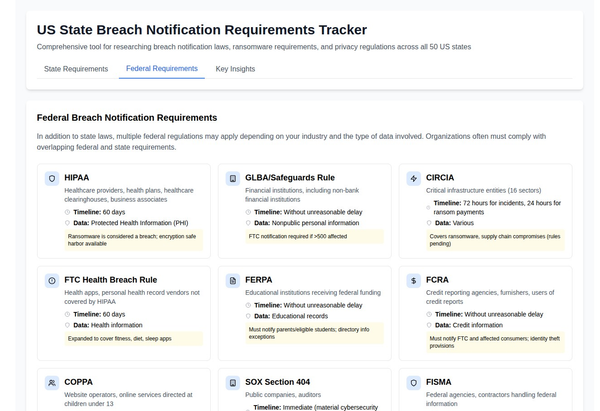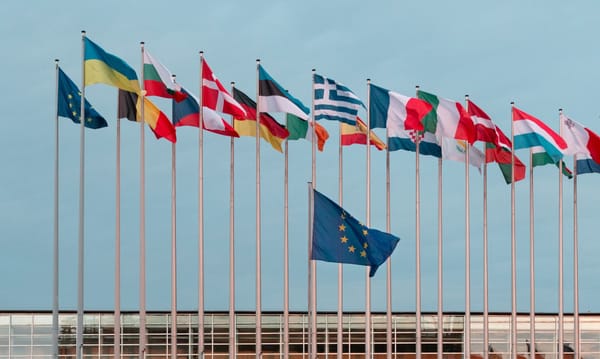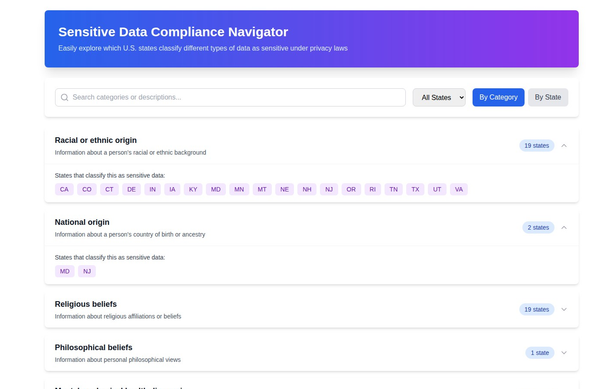Navigating the Global Data Privacy Landscape: Strategies for a $300 Billion Company

- Introduction
- Overview of the current global data privacy landscape
- Significance of data privacy for a global corporation
- Brief mention of the challenges due to diverse international regulations
- Understanding the Complexity of Global Data Privacy Laws
- Overview of key international data privacy regulations (GDPR, CCPA, LGPD, etc.)
- Region-specific data protection challenges (EU, Asia-Pacific, Americas, Middle East, Africa)
- Emerging trends in data privacy regulations worldwide
- Establishing a Global Data Privacy Framework
- Developing a centralized data governance structure
- Implementing a global data privacy policy that aligns with local laws
- Importance of flexibility to adapt to regional legal differences
- Building a Robust Compliance Infrastructure
- Importance of technological investment for data protection (e.g., encryption, anonymization)
- Implementing and maintaining IT systems for data privacy compliance
- Regular audits and compliance checks
- Cultivating a Privacy-First Corporate Culture
- Training and awareness programs for employees
- Establishing a culture of privacy and responsibility across all levels of the organization
- Encouraging ethical data handling practices
- Navigating Cross-Border Data Transfers
- Challenges and solutions for international data transfers
- Understanding and utilizing mechanisms like Privacy Shield, SCCs, and BCRs
- Strategies for dealing with data localization requirements
- Leveraging Data Privacy as a Competitive Advantage
- Building customer trust through transparent data practices
- Using privacy as a differentiator in the market
- Enhancing brand reputation through strong data stewardship
- Responding to Data Privacy Incidents
- Preparing for potential data breaches with a response plan
- Legal obligations and best practices in incident response
- Communicating transparently with stakeholders during a data breach
- Engaging with Regulators and Influencing Policy
- Building relationships with data protection authorities
- Participating in discussions on data privacy law formulations and amendments
- Advocacy for privacy-friendly business environments
- Staying Ahead: Monitoring and Adapting to New Developments
- Establishing a dedicated team for monitoring global data privacy trends
- Continuous learning and adaptation of data privacy strategies
- Future-proofing the business against evolving data privacy norms
- Conclusion
- Recap of the importance of data privacy for global corporations
- Encouragement to continually evolve and innovate in data privacy practices
- Final thoughts on the role of data privacy in shaping the future of global business.
This outline provides a comprehensive framework for discussing how a large, multinational corporation should approach data privacy in a complex and ever-changing global environment.
It's essential to look into the privacy and data protection laws of all countries where the company has a significant user base or operates in. This includes, but is not limited to:
- United States: Federal privacy regulations, state-level laws like California Consumer Privacy Act (CCPA), and sector-specific laws.
- European Union: General Data Protection Regulation (GDPR) and member state-specific regulations.
- India: Information Technology (Reasonable Security Practices and Procedures and Sensitive Personal Data or Information) Rules, and the proposed Personal Data Protection Bill.
- China: Personal Information Protection Law (PIPL) and the Cybersecurity Law.
- United Kingdom: UK GDPR and Data Protection Act 2018.
- Russia: Federal Law on Personal Data (No. 152-FZ).
- Brazil: Lei Geral de Proteção de Dados (LGPD).
- Australia: Privacy Act 1988 and the Australian Privacy Principles (APPs).
- Canada: Personal Information Protection and Electronic Documents Act (PIPEDA) and other provincial laws.
- Southeast Asian Countries: Various national laws, such as Singapore's Personal Data Protection Act (PDPA) and Thailand's Personal Data Protection Act (PDPA).
- Japan: Act on the Protection of Personal Information (APPI).
- South Korea: Personal Information Protection Act (PIPA).
- Argentina: Personal Data Protection Law No. 25.326 and the recent changes proposed for alignment with GDPR.
- Mexico: Federal Law on Protection of Personal Data Held by Private Parties.
- South Africa: Protection of Personal Information Act (POPIA).
- Turkey: Law on Protection of Personal Data No. 6698 (KVKK).
- United Arab Emirates: Various data protection laws including those specific to Dubai International Financial Centre (DIFC) and Abu Dhabi Global Market (ADGM).
- Indonesia: Law No. 11 of 2008 as amended by Law No. 19 of 2016 on Information and Electronic Transactions.
- Nigeria: Nigeria Data Protection Regulation (NDPR).
- Switzerland: Federal Act on Data Protection (FADP).
- New Zealand: Privacy Act 2020.
- Middle Eastern Countries: Increasingly, countries in the Middle East are adopting comprehensive data protection laws, such as Qatar's Law No. 13 of 2016 concerning Personal Data Protection.
- Philippines: Data Privacy Act of 2012.
- Vietnam: Law on Cybersecurity and the forthcoming data protection decree.
- Malaysia: Personal Data Protection Act 2010 (PDPA).
- Colombia: Statutory Law 1581 of 2012 on Data Protection.
It's important to monitor and comply with privacy regulations in all jurisdictions where they operate. This may involve adapting to a patchwork of international laws, some of which can have extraterritorial effects, similar to the EU's GDPR. Additionally, keeping an eye on international data transfer mechanisms, adequacy decisions, and any regional treaties related to cybersecurity and data protection is crucial.
There are a few additional regulations and considerations that a global social media company should be aware of:
- ASEAN Framework on Personal Data Protection: Although not a binding law, it provides guidelines for ASEAN member states on data protection and can influence regional policies.
- APEC Cross-Border Privacy Rules (CBPR): It's a voluntary but enforceable framework designed to facilitate cross-border data flows among APEC member economies while protecting personal data privacy.
- OECD Privacy Guidelines: While not legally binding, these guidelines influence many national privacy laws and are important for understanding global privacy norms.
- Data Localization Requirements: Many countries are increasingly adopting data localization laws that require data about citizens to be stored within the country. Russia and China are prominent examples, but India, Vietnam, and Indonesia have also considered or implemented such laws.
- Biometric Data Regulations: With the increasing use of biometrics in social media (e.g., facial recognition), compliance with specific biometric data regulations, such as Illinois’ Biometric Information Privacy Act (BIPA) in the USA, becomes relevant.
- Child Online Privacy Protection Act (COPPA) in the USA: Specific to the protection of children's data online, which is particularly relevant for social media platforms.
- Sector-Specific Regulations: In some jurisdictions, specific sectors have additional data protection regulations. For instance, the financial sector often has stringent data protection requirements.
- Emerging Privacy Laws: Countries like Egypt, Saudi Arabia, and others in the Middle East and North Africa are developing or have recently implemented new data protection laws.
- International Data Transfer Mechanisms: Beyond GDPR, other jurisdictions have specific requirements for international data transfers, such as the need for Standard Contractual Clauses (SCCs) or Binding Corporate Rules (BCRs).
- National Security and Surveillance Laws: In some countries, national security laws may impact how data is collected, stored, and shared, especially for a social media platform with a global user base.
It's crucial for a global company to not only understand and comply with these laws but also to stay abreast of evolving regulations and proposed legislation in different jurisdictions. This requires a dynamic approach to data governance and privacy management, often involving a dedicated team to monitor legal developments, assess risks, and ensure compliance across different regions. Additionally, engaging in privacy impact assessments and consulting with local legal experts can be beneficial for adapting to regional nuances in data protection laws.
For a global company with operations in various states, it's crucial to comply with a wide range of state-specific regulations. The list of regulations will vary depending on the nature of the business and the states in which it operates. Here’s a list of various state regulations in the United States that such a company might need to follow:
- California
- California Consumer Privacy Act (CCPA)
- California Privacy Rights Act (CPRA)
- CalOPPA (California Online Privacy Protection Act)
- SB 1386 (California Data Breach Notification Law)
- New York
- New York SHIELD Act (Stop Hacks and Improve Electronic Data Security Act)
- New York's Department of Financial Services Cybersecurity Regulation (23 NYCRR 500)
- Massachusetts
- Massachusetts Data Security Law (201 CMR 17.00)
- Nevada
- Nevada Revised Statutes Chapter 603A – Security of Personal Information
- Nevada Privacy of Information Collected on the Internet from Consumers Act
- Nevada's Online Privacy Law (Senate Bill 220): This law grants consumers the right to opt-out of the sale of certain personal information.
- Texas
- Texas Identity Theft Enforcement and Protection Act
- Texas Business and Commerce Code Chapter 521 (Data Breach Notification Requirements)
- Illinois
- Illinois Biometric Information Privacy Act (BIPA)
- Illinois Personal Information Protection Act (PIPA)
- Virginia
- Virginia Consumer Data Protection Act (CDPA)
- Colorado
- Colorado Consumer Data Protection Act (CCPA)
- Florida
- Florida Information Protection Act of 2014 (FIPA)
- Washington
- Washington's Consumer Data Privacy Act (Proposed but not yet enacted as of my last update)
- Maryland
- Maryland Personal Information Protection Act (PIPA): Requires businesses to implement and maintain reasonable security procedures to protect personal information and to notify individuals of data breaches.
- Oregon
- Oregon Consumer Information Protection Act: This law mandates companies to provide notification of data breaches involving personal information.
- Connecticut
- Connecticut Data Breach Notification Law
- Ohio
- Ohio Data Protection Act
- Utah
- Utah Consumer Privacy Act (UCPA)
- Maine:
- The Act to Protect the Privacy of Online Consumer Information: This law requires ISPs operating in Maine to get customer consent before using, disclosing, selling, or permitting access to customer personal information.
- Montana:
- Montana Data Breach Notification Law: This law mandates that entities must notify Montana residents of security breaches that involve their personal information.
- Minnesota:
- Minnesota Government Data Practices Act: It regulates the collection, storage, use, and dissemination of personal data by government entities.
- Plastic Card Security Act: Requires businesses that process payment card transactions to maintain certain security standards.
- Iowa:
- Iowa's Personal Information Security Breach Protection law: Requires notification to Iowa residents when there is a breach of security that results in unauthorized acquisition of their personal information.
- Rhode Island:
- Rhode Island Identity Theft Protection Act of 2015: Requires businesses to implement a risk-based information security program and notify individuals of data breaches.
- New Jersey:
- New Jersey Identity Theft Prevention Act: Requires businesses to disclose breaches of customers' personal information.
- Wisconsin:
- Wisconsin Data Breach Notification Law: Requires entities to notify individuals of unauthorized acquisition of their personal information.
- Alabama:
- Alabama Data Breach Notification Act of 2018: Requires notification to Alabama residents when their sensitive personally identifying information is acquired in a data breach.
These regulations mainly deal with data privacy, consumer protection, and breach notification. Compliance can include various aspects like obtaining consent for data processing, ensuring data security, notifying authorities and affected individuals in case of data breaches, and more. It's important to note that this list is not exhaustive and laws are subject to change. Additionally, many states are in the process of introducing or amending their data protection and privacy laws, which could impact compliance requirements. It’s advisable for companies to continuously monitor legislative developments in states where they operate.
For a social media company, the applicability of state regulations can indeed depend on a combination of factors including the location of its users, employees, and physical office or headquarters. Here's how these factors influence the need to comply with various state regulations:
- Location of Users:
- Most state privacy laws, such as the California Consumer Privacy Act (CCPA), apply to the residents of that state regardless of where the company is based.
- If your social media platform has users who are residents of a particular state (like California, New York, etc.), you will need to comply with the privacy laws of those states.
- Location of Employees:
- Employment and labor laws are typically governed by the state where the employees work.
- If you have employees in different states, you need to comply with each state’s employment laws, which can cover a range of issues from workplace safety to anti-discrimination policies.
- Headquarters/Office Locations:
- The location of your headquarters or offices can dictate the general business and corporate laws you must adhere to.
- This includes state laws regarding business operations, taxation, corporate governance, and other general corporate activities.
- Multiple Combinations:
- Often, a social media company needs to navigate a complex mix of these laws. For instance, they must comply with the privacy laws of the states where their users live, the employment laws of the states where their employees work, and the corporate laws of the state where they are incorporated or have their primary place of business.
- In some cases, even if the company doesn’t have a physical presence in a state, if they are doing business or have users there, they may still be subject to certain state laws (like privacy laws).
- Cross-Departmental Coordination:
- It is vital for different departments within the company (like legal, HR, and operations) to coordinate and ensure compliance with the respective state laws. This might include tailoring user agreements, privacy policies, and employee handbooks to meet specific state requirements.
- Regular Legal Review and Updates:
- Since state laws, especially concerning digital privacy and data protection, are rapidly evolving, it’s crucial for the company to regularly review and update its policies and practices in line with these changes.
Given the complexities of navigating these various state laws, it's often advisable for a social media company to seek legal counsel specialized in each of these areas to ensure comprehensive compliance.
From a technical standpoint, compliance with state regulations for a social media company involves several considerations related to the location of servers, data in transit and at rest, and the location of users' devices. Here’s how each of these aspects plays a role:
- Location of Servers and Data Centers:
- The physical location of servers and data centers can determine jurisdiction and consequently the legal requirements for data storage and processing.
- Some state laws may require data localization, meaning that data about residents must be stored and processed within that state or country. Compliance with such laws can necessitate setting up or renting server space within specific jurisdictions.
- Data in Transit:
- Data in transit refers to data actively moving from one location to another, such as across the internet or through a private network.
- Protecting data in transit is crucial, often requiring encryption and secure transmission protocols to safeguard against interception or unauthorized access. This is a key aspect of complying with state laws that mandate data security.
- Data at Rest:
- Data at rest pertains to data stored on physical media, like servers or databases.
- Ensuring the security of data at rest typically involves encryption, access controls, and robust authentication mechanisms. This is especially important for compliance with laws that protect personal or sensitive information.
- Location of Users’ Phones/Devices:
- The location of users’ devices is particularly relevant for location-based legal requirements. For instance, if a user is in a state with specific privacy laws, those laws could apply to the data collected from that user.
- Geolocation data can also be subject to specific regulations. Certain states may have laws regarding the collection, use, and sharing of geolocation information.
- Cross-Border Data Transfers:
- When data crosses state or national borders, multiple jurisdictions’ laws can apply. For instance, transferring data from EU residents to the US can involve GDPR compliance.
- Mechanisms like Standard Contractual Clauses (SCCs) or Binding Corporate Rules (BCRs) may be required for legal international data transfers.
- Technical Compliance Measures:
- Implementing technical measures like Data Loss Prevention (DLP) tools, firewalls, intrusion detection and prevention systems, and regular security audits.
- Regularly updating privacy policies and terms of service to ensure they align with the technical measures and data handling practices.
- Cloud Computing Considerations:
- If using cloud services, it’s important to understand the cloud provider’s role and responsibilities in data protection and to ensure their compliance with relevant laws.
- User Consent and Preferences:
- Technically managing user consents and preferences, especially for advertising and data sharing practices, in compliance with state-specific privacy regulations.
Given the technical complexity and legal implications, many social media companies invest in specialized IT and legal expertise to manage compliance effectively. Regular audits and assessments are also key to ensuring ongoing compliance with state, federal, and international regulations.





